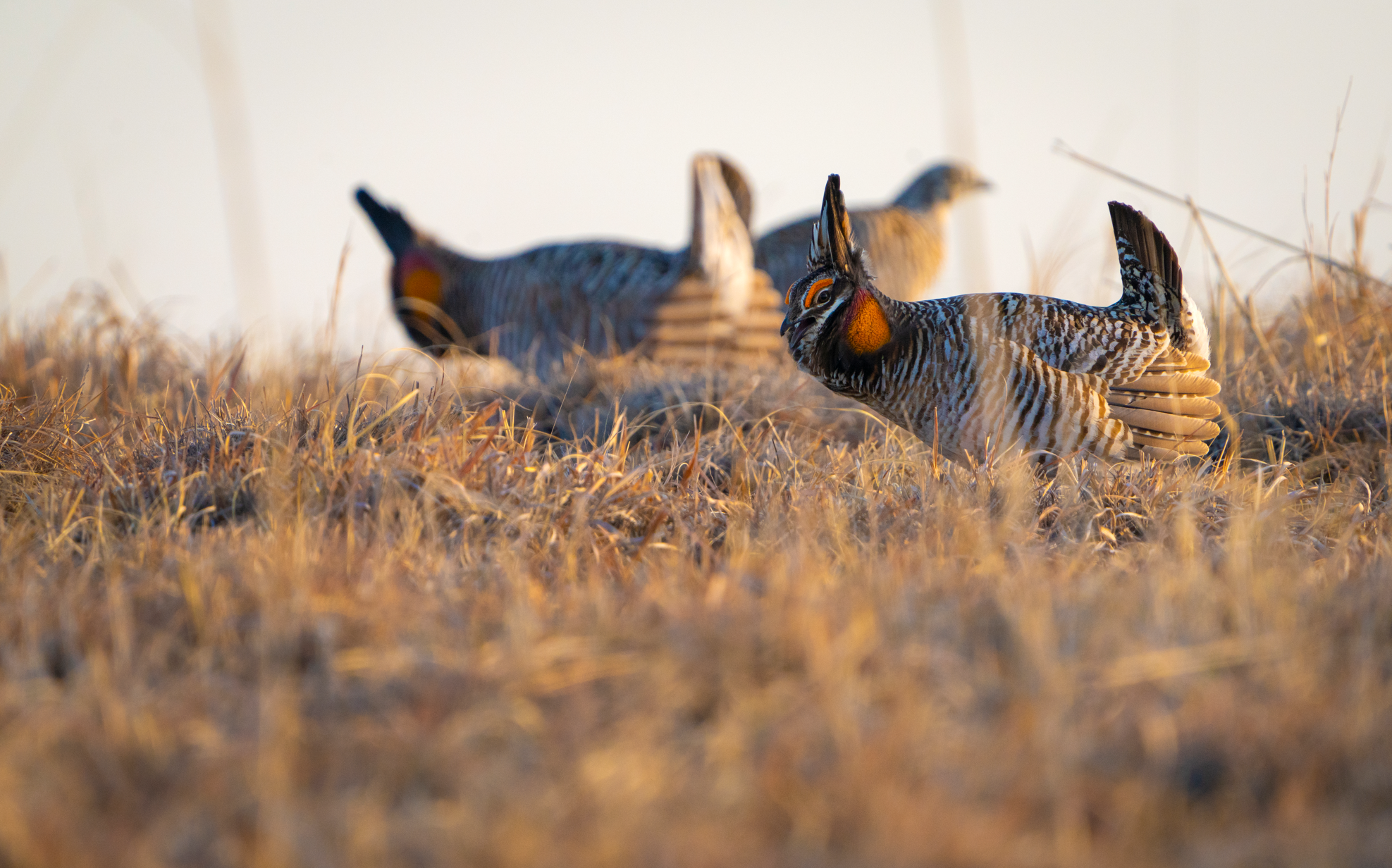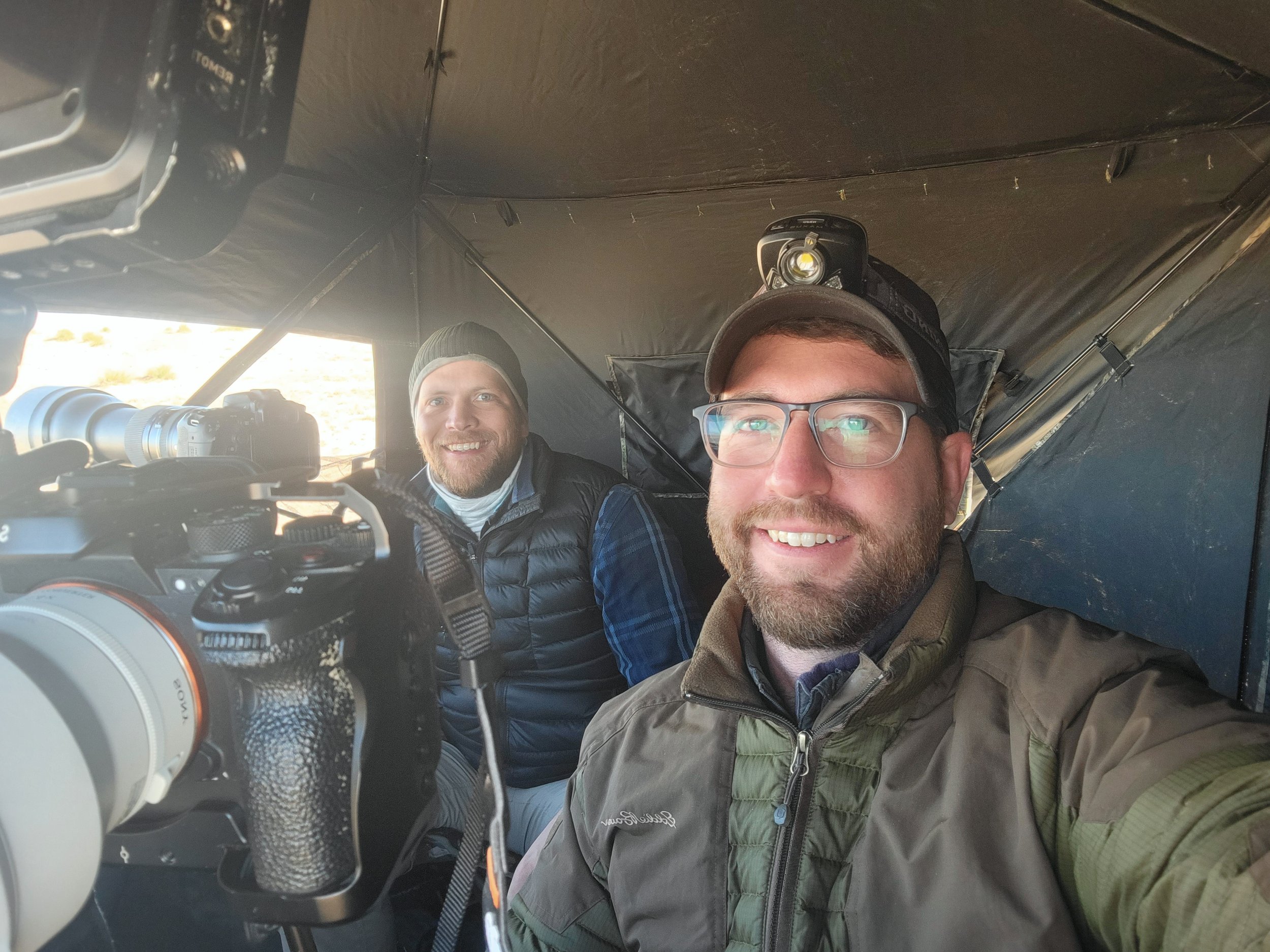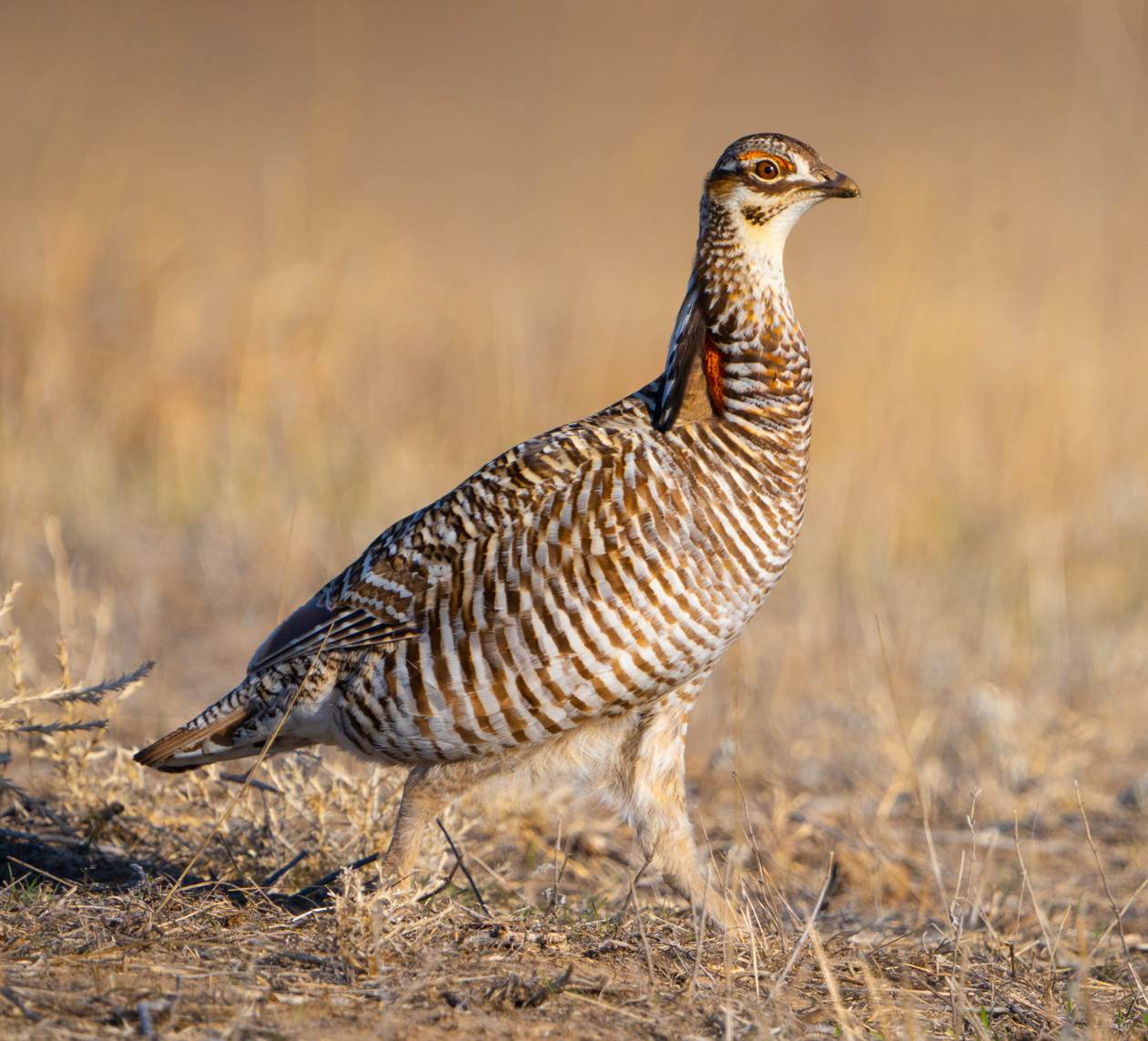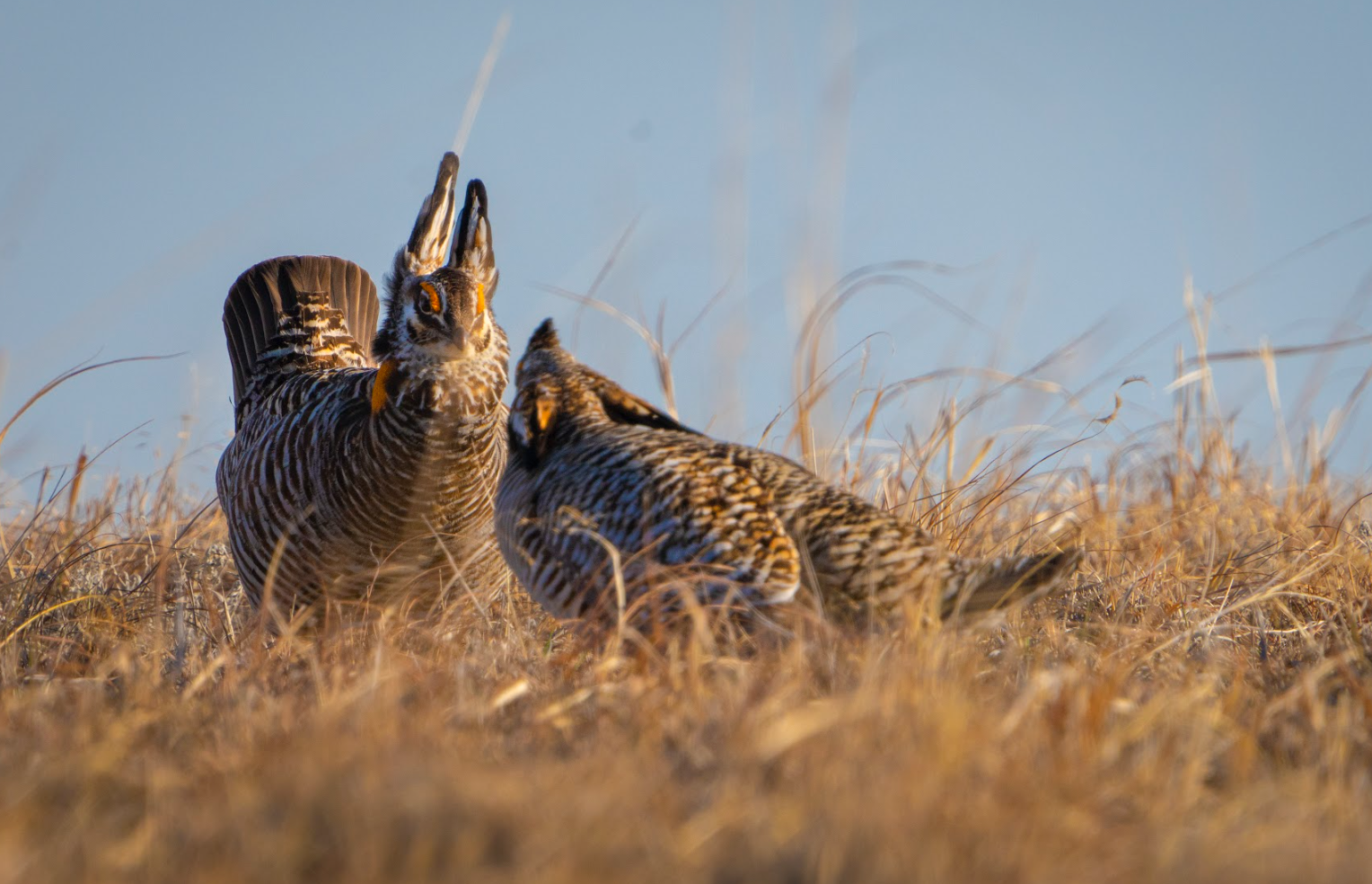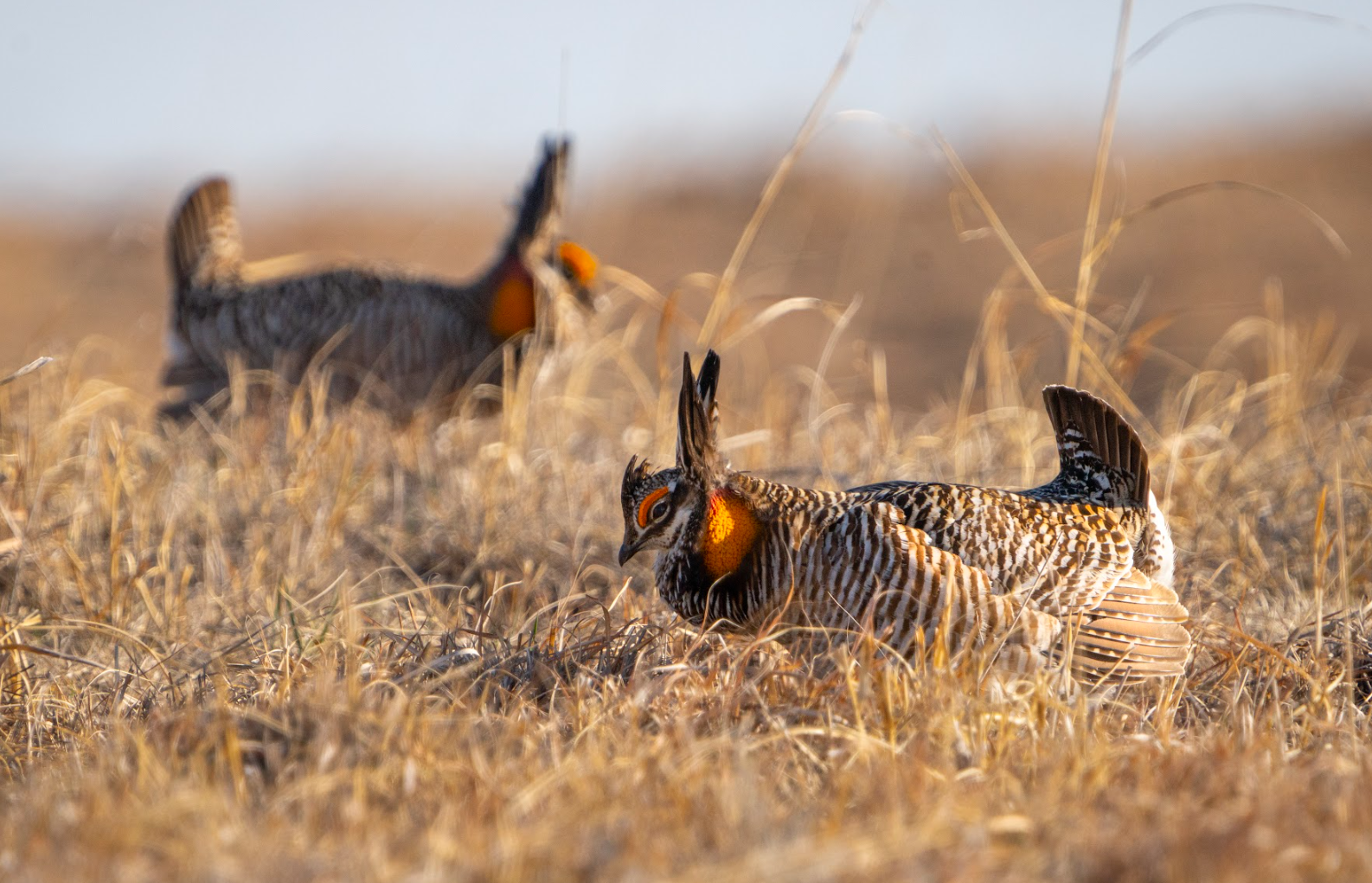As the crisp Nebraska air blew across the open plains, my buddy and I struggled to set up the blind. It was pitch black outside, and the wind kept pulling it from our fingers, but we had to get it set up before the greater prairie chicken males began to assemble. It was 6:00 am, the moon was still shining bright and the sun barely peaked above the horizon. Suddenly, the strange and booming calls of the greater prairie chicken began to sound from every direction.
What sets greater prairie chicken leks apart is the captivating convergence of male birds during the breeding season. These leks serve as communal grounds where males gather to display their vibrant plumage, engage in vocal harmonies, and compete for the attention of discerning females. It is a mesmerizing theater of booming calls, elaborate dances, and mid-air clashes, showcasing the strength, beauty, and resilience of these charismatic birds. The lek becomes a stage where the prairie chickens, draped in shades of gold and orange, transform the ordinary grasslands into a realm of extraordinary courtship, illustrating the unique spectacle and dynamics that define the breeding rituals of this iconic species.
It is becoming much more difficult to observe these dance floors as prairie chickens are challenged by an ever increasing array of threats. From loss of habitat to pollution, the population of prairie chickens is no where close to what it used to be.
Greater prairie chickens (Tympanuchus cupido) are incredible species to film and are very important because they play a crucial role in maintaining the biodiversity of prairie ecosystems. By conserving prairie chickens, we indirectly support the preservation of their habitat and the numerous plant and animal species that rely on these grassland ecosystems. They are also considered an indicator species, meaning their presence and behavior provide valuable insights into the overall health and condition of grassland ecosystems. They are highly sensitive to changes in habitat quality, including the loss of suitable grassland habitats, fragmentation, and degradation. Monitoring prairie chicken populations helps scientists and conservationists assess the state of grassland ecosystems and identify potential environmental issues.
During the breeding season, males gather in communal display grounds, known as leks, to perform elaborate courtship displays to attract females. The creation and maintenance of these lek sites involve specific vegetation requirements, such as tall grasses and bare patches. By engaging in these mating behaviors, prairie chickens shape the structure and composition of grassland vegetation, contributing to the overall biodiversity of the habitat.
Prairie chickens have cultural and historical significance for many indigenous and local communities. They have been part of traditional practices, ceremonies, and stories for generations, representing a connection to the land and its wildlife. Preserving prairie chickens helps protect these cultural traditions and the historical heritage associated with these charismatic birds.


